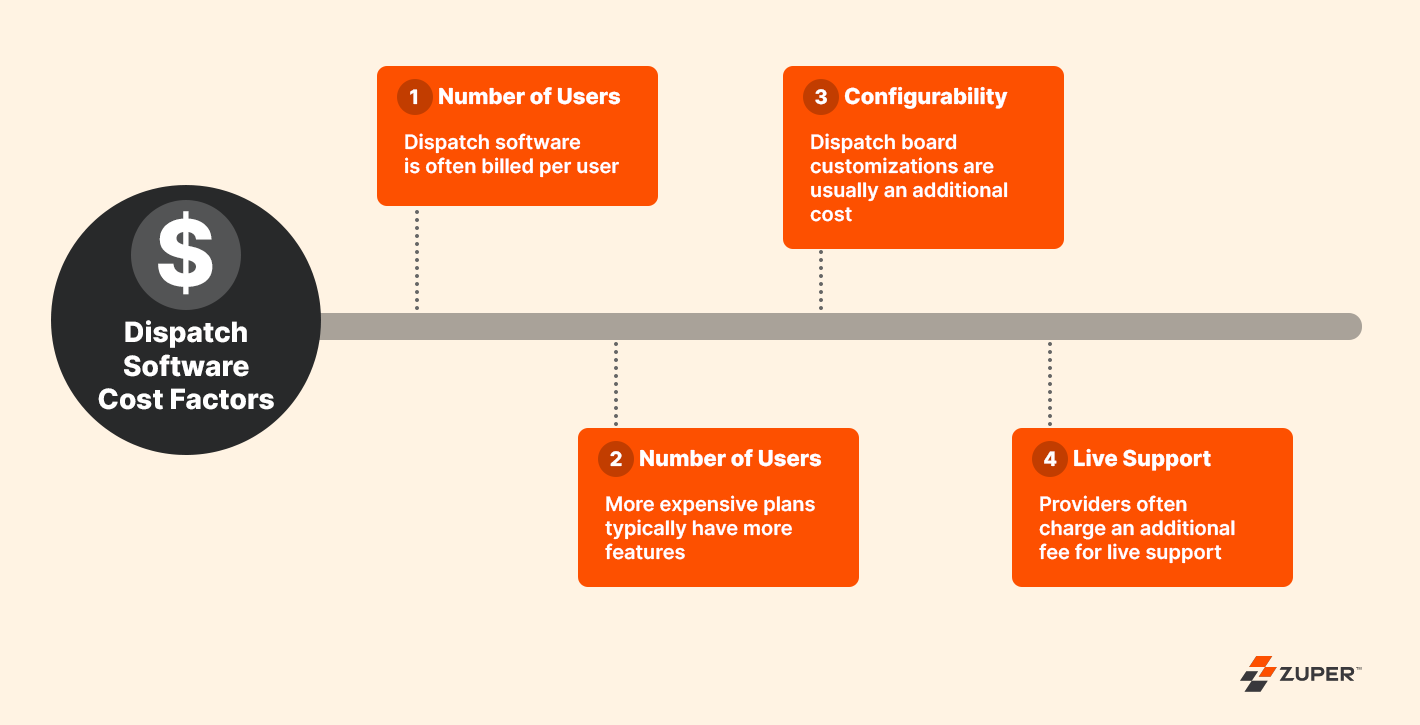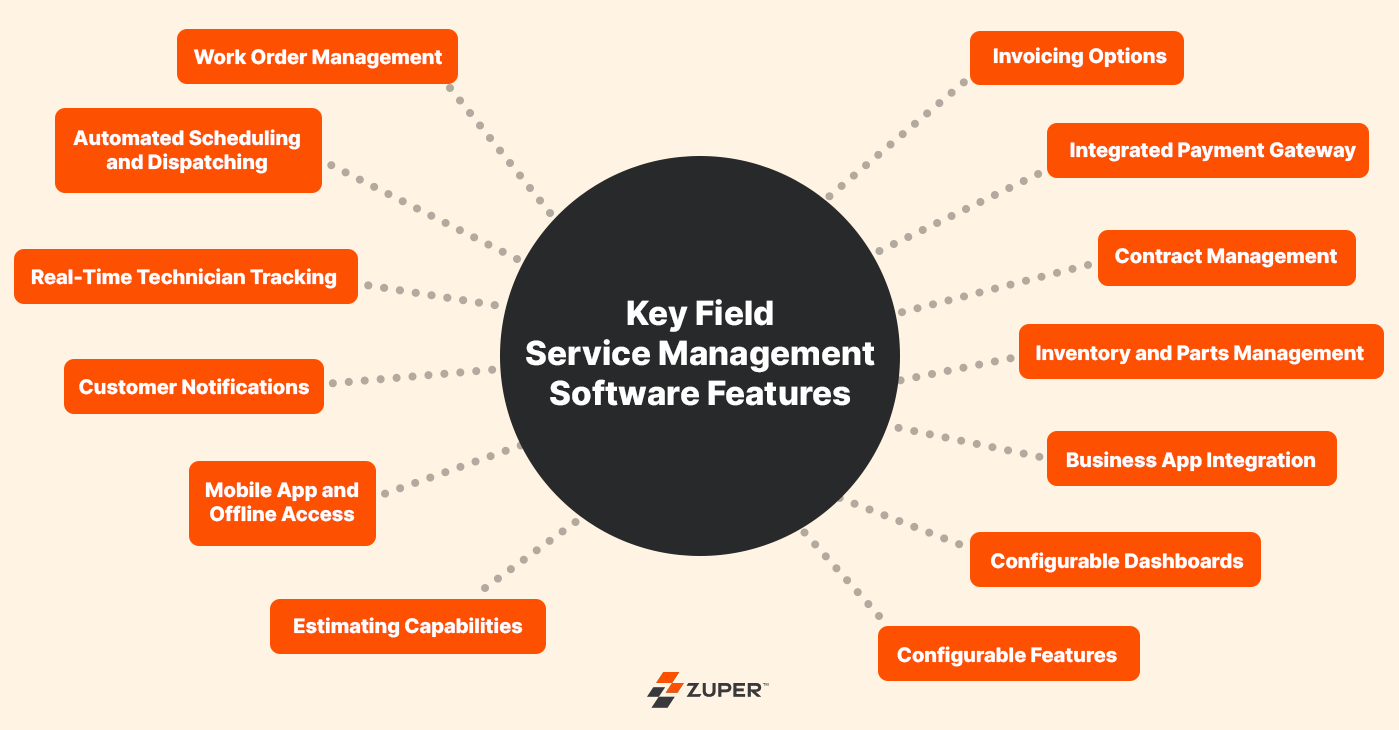All Blogs

Best Roofing Estimate App 2025
Roofing estimate apps give crews the digital tools they need to prepare accurate estimates from anywhere, including right on the job site. They take the guesswork out of quoting roofing services, streamline the approval process, and improve the customer experience. However, not all roofing apps are created equal, and choosing the wrong one can create frustration and reduce productivity. We carefully selected and ranked the best roofing estimate apps for mobile devices based on a proprietary algorithm our research team developed, consisting of: User Experience (30%): How easy it is to navigate the user interface (UI) and use the product’s features. Average Review Score (25%): A summary of the 1-5 ratings of the software’s customer reviews, averaged across multiple third-party rating sites. Features and Capabilities (20%): The overall richness of estimating and field service management features and how well they align with roofing contractors’ requirements. Integration Abilities (15%): How easy it is to integrate the software with third-party apps, and how well they work together. Onboarding and Support (10%): How streamlined the onboarding process is and how well the provider supports the software. This blog reviews the seven best roofing estimate apps for 2025 to help you choose the right

Best Software for Roofing Companies 2005
Roofing software streamlines many of the workflows involved in running a busy roofing company, making it a vital investment as your business grows. Finding the right software can boost productivity and increase revenue, but options can be difficult to learn, may be missing key features needed to scale your business, or lack integration support. Our experts conducted a meta-analysis of roofing software reviews from real customers on third-party websites over the last five years to identify the best software for roofing companies, summarizing the pros and cons of each and highlighting the key features that customers can’t do without. We also offer advice on how to choose the right roofing software to ensure you get all the functionality you need to drive your business forward. The Best Software for Roofing Companies 2005 Software Best for Key Features Average Customer Rating 1 Zuper All-in-one service management and CRM capabilities – Mobile app with offline mode- AI assistant for field and office teams – Location intelligence – Smart dispatching – 60+ app integrations 4.6 2 JobNimbus Customer-facing operations – Custom sales workflows- Material ordering – Caller ID – Billing boards – Search engine optimization 4.4 3 iRoofing 3D visualizations – Roof measurements

How to Choose a CRM for Roofing Contractors
Customer Relationship Management (CRM) software helps businesses manage customer interactions, providing a central hub for tracking sales opportunities, customer communications, and other customer-facing workflows. For roofing contractors, a CRM can streamline a lot of the tedious administrative work that usually keeps them stuck in the office rather than out making money in the field. Every CRM is different, though, and not all of them are designed with the specific needs of roofers in mind. Choosing the right one can make life significantly easier, while choosing the wrong one can create more challenges than it solves. In this post, the roofing industry experts at Zuper analyze the CRM marketplace and provide actionable advice on how to choose a CRM for roofing contractors. How to Choose a CRM for Roofing Contractors in Four Steps The CRM marketplace is crowded with options that all seem to offer similar features and functionality, making it difficult to separate the signal from the noise and select the best software for your needs. Following these steps will help you narrow the field and choose a CRM solution that meets or even exceeds your expectations. 4 Steps to Choose a CRM for Roofing Contractors Step Questions to Ask

AI Tools for Roofing
Artificial intelligence is having a transformative effect on nearly every industry, and roofing is no exception. Some roofers are turning to AI with the objectives of reducing manual legwork, cutting costs, and optimizing schedules. After extensive research and analysis, our team has developed a ranking of capabilities and benefits that may be derived from implementing AI tools for roofing software along wth key considerations that must be evaluated in order to arrive at the best software roofing solution for your implementation. AI Tools for Roofing: 8 Exciting Capabilities AI Roofing Capability Description 1 Damage Detection AI can help roofers identify roof damage while reducing the need for manual assessments. 2 Roof Inspections AI uses high-resolution aerial imagery to perform comprehensive roof inspections. 3 Roof Measurements and Estimates AI allows roofers to measure and generate estimates more efficiently. 4 Roof Design and Visualization AI can generate realistic visualizations to show homeowners how their completed roof will look. 5 Sales and Marketing AI tools help roofers generate leads, manage the sales process, and automate follow-ups. 6 Customer Service Agentic AI and AI-powered automation improve the customer experience. 7 Project Management AI helps simplify workflows and optimize resources for maximum efficiency. 8 Data

Dispatch Software Cost & Factors
Many new field service businesses start out with manual dispatch processes, using whiteboards and spreadsheets to schedule jobs and technicians. These workflows are inefficient to begin with, and only grow more unwieldy as the business gets busier. The result is stressed-out dispatchers juggling job information across multiple physical and digital locations, often leading to costly mistakes or employee burnout. Dispatch software can help reduce headaches and improve efficiency. Investing in dispatch software can ultimately increase revenue by improving productivity and making field service operations more scalable, but there are both initial and recurring costs that must be considered in your budget. Using Zuper’s dispatch software as a model, let’s examine the dispatch software cost factors that determine the price of these solutions. Dispatch Software Cost Factors This table highlights the main factors that influence the cost of dispatch software, with more detailed breakdowns below. Dispatch Software Cost Factors Rank Factor Description Example 1 Number of Users Dispatch software is often billed per user Zuper’s Starter plan is $65 per user, per month 2 Features More expensive plans typically have more features Zuper’s Core plan unlocks advanced tools for $85 per user, per month 3 Configurability Dispatch board customizations are usually

AI Field Service Management
Artificial intelligence (AI) is having a transformative effect on the field service management (FSM) industry. A recent survey from Zuper and Field Service Insights found that 74% of organizations are planning to increase their investment in AI over the next year to take advantage of potential productivity and revenue gains as well as stay competitive in a crowded marketplace. This guide to AI field service management explains its current capabilities, the impact it’s having on the industry, common implementation challenges, and some of the most exciting new AI features offered by the Zuper FSM platform. What is AI Field Service Management? AI field service management is exactly what it sounds like – using artificial intelligence to streamline and enhance FSM workflows. While the possibilities in this arena are seemingly endless, current AI capabilities for field service management software can be broadly separated into three categories: 1. Assistants AI assistants are booming in popularity across nearly every industry, and field service management is no exception. AI assistants can help technicians log field notes, add and annotate photos, and update job fields quicker and more accurately. They make it easier to document even the most complex jobs, assisting workers both in the

Work Order Management System: 2025 Guide
Administrative tasks like work order management are the bane of any service business. Luckily, we no longer have to rely on paper forms and clipboards, and can instead take advantage of a wide range of work order management software solutions. These platforms offer digital tools for creating, assigning, scheduling, and updating work orders, often with mobile capabilities for technicians in the field. This guide highlights the seven best work order management systems for 2025 and the key features that make them stand out. The Best Work Order Management Systems for 2025 We carefully selected and ranked the top work order management systems based on a proprietary algorithm our research team developed, consisting of: Features and Capabilities (20%): The overall richness of work order management features and how well they align with service businesses’ requirements. User Experience (25%): How easy it is to navigate the user interface (UI) and use the product’s features. Integration Abilities (15%): How easy it is to integrate the software with third-party apps and how well they work together. Onboarding and Support (10%): How streamlined the onboarding process is and how well the provider supports the software. Average Review Score (30%): A summary of 1-5 ratings of

Best Roofing Estimating Software for Contractors in 2025
Estimating jobs shouldn’t be a guessing game for roofing contractors, but for many, creating quotes still involves manual calculations, disconnected tools, and paperwork that slows the whole process down. However, the right roofing estimating software can completely transform how you quote, sell, and win jobs. In 2025, roofing businesses that want to stay competitive are turning to roofing software for contractors that not only streamlines estimating but also integrates with scheduling, invoicing, and customer management. Zuper, a complete field service management for roofing platform, makes estimating faster, more professional, and fully connected to the rest of your operations. The Best Roofing Estimating Software for Contractors in 2025 We carefully selected and ranked the top roofing estimating software for contractors based on a proprietary algorithm our research team developed, consisting of: Average Review Score (30%): A summary of the 1-5 ratings of the software’s customer reviews, averaged across multiple third-party rating sites. User Experience (25%): How easy it is to navigate the user interface (UI) and use the product’s features. Features and Capabilities (20%): The overall richness of estimating and field service management features and how well they align with roofing contractors’ requirements. Integration Abilities (15%): How easy it is to

How to Scale a Roofing Business
It’s tempting to view all business growth as positive, but taking on a larger volume without a strong strategy in place can lead to spiraling labor and material costs, unprofitable jobs, and unhappy customers. Manual, paper-based workflows bog down the back office and make scheduling a logistical nightmare while leaving field crews disconnected and customers uninformed. Successfully scaling a roofing business requires a firm growth strategy as well as a modern field service management (FSM) solution that automates critical workflows and provides the deep visibility needed to control costs and protect margins. The ten tips below describe how to scale a roofing business using a modern FSM like the Zuper platform. How to Scale a Roofing Business: 10 Tips for Sustainable Growth Roofing Business Scaling Strategies Strategy Why It Matters Zuper’s Value 1. Robust Lead Generation Program Diversified lead generation methods enable sustainable growth beyond word-of-mouth. Automatic lead generation from web forms and Google LSAs Automated follow-up texts and emails Source tags and dashboards for deep visibility 2. Standardized Sales Process A standardized sales process ensures accurate estimates, short sales cycles, and higher margins. Templated, margin-guarded quotes from EagleView aerial measurement data Floor-margin alerts Digital proposals with e-signing 3. Dynamic

Best Dispatch Software for Service Companies 2025
Dispatch software is crucial to the efficiency and success of modern service companies. Manual dispatch boards can’t keep up with customer expectations for fast and personalized service, especially as your business grows. The right dispatch software helps streamline back office operations, support technicians in the field, and improve the customer experience. Here’s a look at the best dispatch software for service companies in 2025, as well as an analysis of the key characteristics to look for in the right solution. The Best Dispatch Software for Service Companies in 2025 We carefully selected and ranked the top dispatch software solutions based on a proprietary algorithm our research team developed, consisting of: Software Features and Capabilities User Experience Integration Abilities Onboarding and Support Average Review Score 1 Zuper 4.8 4.7 5.0 4.9 4.6 2 Housecall Pro 4.5 4.9 4.5 4.9 4.1 3 ServiceTitan 4.9 4.4 4.4 4.2 4.4 4 SAP Field Service Management 4.6 4.8 4.3 4.2 4.0 5 Jobber 4.1 4.5 4.1 4.2 4.4 6 Oracle Fusion Field Service 4.8 4.5 4.0 3.8 4.1 7 FieldEdge 4.1 4.5 4.0 3.5 4.2 1. Zuper Zuper’s user-friendly dispatch board is part of its comprehensive field service management platform. It offers automatic dispatching based

Field Service Management Trends 2025
The global field service management market was valued at $6 billion last year and is projected to grow rapidly, experiencing a compound annual growth rate (CAGR) of 11.4% to reach $11.5 billion by 2030. While the field service industry faces numerous challenges in the year ahead, including ongoing labor shortages and ever-increasing customer expectations, the proliferation of exciting technologies like artificial intelligence (AI), the Internet of Things (IoT), and smart home systems is creating new opportunities. This blog looks at key field service management trends for 2025 and provides recommendations for strengthening your business in the future. Field Service Management Trends 2025 Workforce Trends Labor shortages and increasing workloads continue to plague the field services industry in 2025, with an aging workforce and a lack of interest among younger generations contributing to the problem. 74% of field service workers say their workloads are continuously increasing. (Source) 66% of technicians say they’ve experienced burnout on the job at least once per month. (Source) There is a current work deficit of 2.6 million across the service industry. (Source) Only 40% of younger workers express interest in field service careers. (Source) 50% of field service technicians are over the age of 50. (Source)

How to Grow Your Roofing Business
Roofing businesses face numerous challenges in their quest for sustainable growth, from a crowded market and razor-thin margins to high employee turnover and unprofitable slow seasons. Overcoming these hurdles requires a multi-pronged approach that targets marketing, operations, and sales. This may sound daunting, particularly for small roofing companies with overstretched staff. However, modern field service management (FSM) software like Zuper provides exciting technological solutions to your biggest growth challenges. This blog describes how to grow your roofing business with 10 proven strategies, including how the Zuper platform can help. How to Grow Your Roofing Business: 10 Strategies for Success Roofing Business Growth Strategies Strategy Why It Matters Zuper’s Offering 1. Proactive Referral Program Referrals account for a significant portion of residential roofing leads. Automated post-job review requests. 2. Automatic Dispatch and Scheduling Routing inefficiencies cost roofing companies tens of thousands of dollars annually. Intelligent, AI-powered dispatch and scheduling. 3. Local Search Engine Optimization 86% of people look up the location of a business on Google Maps. Structured job data like addresses and geo-tagged photos. 4. Roofing Association Membership Roofing groups provide numerous benefits to growing businesses. Compliant with all industry standards. 5. Modern Sales Technology Homeowners are looking for instant

Dispatch Optimization: Guide for Success
Dispatchers’ jobs are not easy. They work on unpredictable schedules full of jobs that change quickly. Their days are ruled by customer demands, travel delays, and shifting priorities. Should they dispatch a new driver to a high-priority job or answer multiple calls from technicians stuck in traffic? Should they assign a driver to a job in a remote location or prioritize several jobs that are much more centrally located, but have tight deadlines? Dispatchers must make tough calls that can impact efficiency. Quick, effective, and informed decision-making is necessary for successful dispatching. To improve decision-making, you need a system that helps you make the right choice at the right time, leading to an optimal dispatch plan. So, what’s the solution for efficiently scheduling and dispatching field service calls? Dispatch optimization through adaptive scheduling algorithms. These dynamic systems can optimize your schedule in real time. While not without challenges relating to data management and adoption, dispatch optimization solutions using adaptive scheduling algorithms can help unlock game-changing potential. What is adaptive scheduling, and how does it optimize dispatching? Adaptive scheduling solutions use dynamic software algorithms that perform technician dispatch optimization in real time based on changing priorities and conditions. Unlike fixed scheduling

Best Field Service Management Software for HVAC Companies 2025
The best HVAC service software is easy to use while providing the robust capabilities needed to manage field operations efficiently. This guide compares the five best field service management software platforms for HVAC companies based on the richness of their features, ease of use, integration capabilities, and more to help you choose the right solution for your business. The Best HVAC Service Software for Field Service Management We selected and ranked the top HVAC service software solutions based on a proprietary algorithm our research team developed, consisting of: Features and Capabilities (20%): The overall richness of features and how well they align with HVAC businesses’ requirements. User Experience (25%): How easy it is to navigate the user interface (UI) and use the product’s features. Integration Abilities (15%): How easy it is to integrate the software with third-party apps and how well they work together. Onboarding and Support (10%): How streamlined the onboarding process is and how well the provider supports the software. Average Review Score (30%): A summary 1-5 rating of the software’s customer reviews, averaged across multiple third-party rating sites. Software Features and Capabilities User Experience Integration Abilities Onboarding and Support Average Review Score 1 Zuper 4.8 4.7 5.0

How to Improve Your Dispatch Process
Dispatchers have a highly stressful job that requires extreme focus and an almost superhuman ability to multitask. When they perform their jobs well, the entire business benefits; by the same token, when they struggle due to outdated tools and manual processes, everyone from field techs to business owners is affected. Dispatch optimization with a modern field service management solution can help boost efficiency, reduce headaches, and improve revenue. This guide provides six tips for how to improve your dispatch process using tools like the Zuper dispatch board. How to Improve Your Dispatch Process: 6 Tips Below are the top six ways you can improve your dispatch process using an automated, user-friendly field service management solution. 1. Orchestrate Jobs from a Centralized Dispatch Board The job information that dispatchers need to schedule technicians is often spread across various whiteboards, spreadsheets, and text threads. Manually juggling and reconfiguring jobs in this way is highly inefficient, especially during peak months. This juggling can lead to issues like technician idle time that impact revenue. An intelligent dispatch board like Zuper centralizes job details and schedules technicians based on factors like job volume, skillsets, customer preferences, and geographic proximity. Zuper provides complete visibility into jobs,

Field Service Management KPIs
The field service business model is complex. Relying on key performance indicators (KPIs) can help you determine what you’re doing well and where you can get better. This guide will unpack some of the most important field service management KPIs and tips for how to track and improve these metrics effectively with tools like Zuper. Top Field Service Management KPIs KPI Benchmark Mean Time to Repair (MTTR) Under 5 hours Average Response Time Under 24 hours First-Time Fix Rate At least 80% Average Travel Time Under 30 minutes Average Cost Per Service Varies by industry Technician Utilization At least 70% Schedule Adherence At least 90% Jobs Per Technician Per Day At least 4 Top Field Service Management KPIs to Monitor Modern tools make it possible to track just about everything. While it’s great to have access to relevant insights, it’s also easy to get lost in a sea of data. With that in mind, here are some KPIs to focus on so you can cut through the noise and uncover insights that matter. Mean Time to Repair (MTTR) Mean time to repair, or MTTR, is a measure of the average time it takes to complete a job. It’s one of

Field Service Management Tools: Explained
Field service management (FSM) tools are software solutions that assist with many of the workflows involved in overseeing and completing technical work in the field. As companies across industries like HVAC, roofing, plumbing, and electrical increasingly look to FSM software to streamline and automate their operations, the field service management tool market is expected to grow to $7.16 billion by 2028. Companies that don’t invest in FSM software will fall behind in productivity and profitability, but selecting the right field service management tools is challenging. This guide provides a list of key features to look for, highlights the characteristics that make the best FSM tools stand out, and offers a comparison of the top options. Key Features of Field Service Management Tools FSM comprises many different workflows and responsibilities. Field service management tools help to streamline or even automate these tasks to make FSM more efficient. Capabilities of Field Service Management Tools Work Order Management Create, assign, track, and complete work orders Dispatching Dispatch technicians based on skillset, location, and other factors Inventory Management Track and manage inventory in the warehouse and in the field Asset Management Monitor customer assets and perform preventative maintenance Invoicing Generate, send, and follow up

Field Service Management Challenges
Managing a field service operation is a complex balancing act. Your business faces numerous hurdles every single day, and field service management challenges can quickly lead to inefficiencies and increased costs. Fortunately, recognizing and addressing these pain points early on can lead to major improvements that offer you a competitive edge. Here’s a look at the most common field service management challenges and how you can solve them using the right technologies and processes. Key Challenges in Field Service Management Running a successful field service operation requires overcoming several interconnected hurdles, including the following: Scheduling and Dispatch Inefficiencies One of the biggest headaches in field service management is optimizing your technicians’ schedules. For instance, roofing contractors need to assign jobs to their staff based on each employee’s skills and experience. Without real-time visibility into who is available, they may struggle to assign the right person to each new job. Manual scheduling methods can result in frustrations like: Double-booked technicians Missed appointments Inefficient routes resulting in longer travel times Not only do these issues impact customer satisfaction and drive up your operating costs, but manual scheduling methods typically create mountains of paperwork and extra office work. The solution is a digital

Field Service Management Software Features
The right field service management (FSM) software can be a game-changer. It will help you to optimize your operations by reducing costs, boosting productivity, keeping customers happy, and gaining valuable insights into your field service business. The wrong choice, however, can end up costing you wasted resources, frustrated employees, and lost opportunities. Here are the top field service management software features you should consider when looking for an FSM solution that will set your field service business up for success. Effective Field Service Management Field service management (FSM) is the process of scheduling appointments, assigning technicians, ensuring quality service, and meeting customer expectations. It is essential for installation and service industries such as HVAC, roofing, plumbing, and electrical. FSM is also widely used in many other businesses, including food delivery, transportation, healthcare, telecom, and building maintenance services. Essential Capabilities When evaluating FSM software options, pay close attention to the work order management, and scheduling and dispatching capabilities offered. These features will determine how well the software streamlines the largest portion of your field service operations. However, other capabilities, such as technician tracking, customer notifications, and expense estimations will also play a significant role in improving your overall operations. Key Field

Field Service Management Benefits That Boost Your Bottom Line
Managing a field service business is no small feat, given the number of variables that are not always in your control.

Field Service Management Best Practices
Managing a field service business requires more than just skilled technicians.
Learn More About
Zuper Today
Schedule a demo with our product experts and explore how you can improve your field service operations today.
